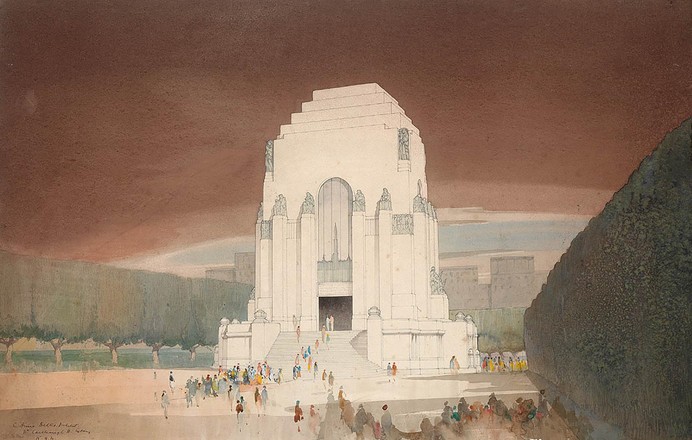
Anzac Memorial, Hyde Park, 15 September 1930
Charles Bruce Dellit (1898–1942)
Watercolour and pencil on wove (machine-made) paper
XV1 / Mon War / 1
Watercolour and pencil on wove (machine-made) paper
XV1 / Mon War / 1
Fundraising for the proposed Anzac Memorial in Hyde Park started on the first anniversary of the landing of Australian troops at Gallipoli (25 April 1915). Finally in 1929 Parliament agreed to allow a Memorial to be built in Hyde Park. Following a design competition attracting 117 entries, a young Sydney architect C Bruce Dellit won with a ‘contemporary’ Art Deco style – ‘I wanted to get right away from the classical tradition’. He engaged the sculptor Rayner Hoff to create the statues and bas-reliefs for the monument. It opened to the public in 1934.


 Back to list
Back to list